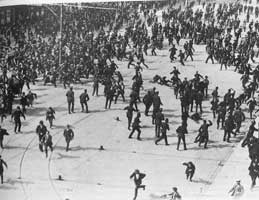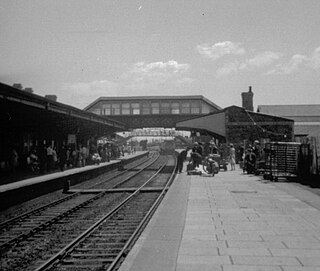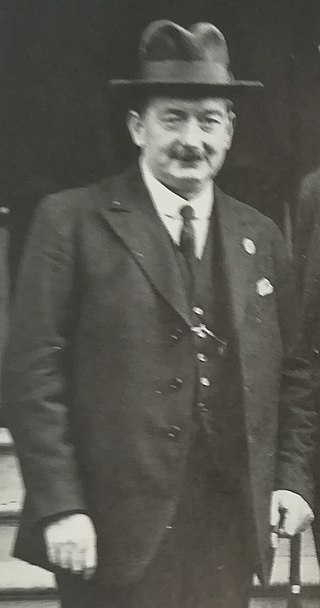| 1911 Liverpool general transport strike | |||
|---|---|---|---|
| Part of the Great Unrest | |||
| Date | June – August 1911 | ||
| Location | |||
| Methods | General strike | ||
| Resulted in | Strike suppressed | ||
| Parties | |||
| Lead figures | |||
| Number | |||
| |||
| Casualties | |||
| Death(s) | 2 people | ||
| Injuries | 365 people | ||
The 1911 Liverpool general transport strike, also known as the great transport workers' strike, involved dockers, railway workers, sailors and other tradesmen. The strike paralysed Liverpool commerce for most of the summer of 1911. It also transformed trade unionism on Merseyside. For the first time, general trade unions were able to establish themselves on a permanent footing and become genuine mass organisations of the working class.
Strike action began on 14 June when the National Sailors' and Firemen's Union announced a nationwide merchant seamen's strike. Solidarity action in support of the seamen led to other sections of workers striking. A strike committee, chaired by the syndicalist Tom Mann, was formed to represent all of the workers in dispute.
Many meetings were held on St. George's Plateau, next to St. George’s Hall, on Lime Street, including the rally on 13 August in which police carried out a baton charge a crowd of 85,000 people, who had gathered to hear Tom Mann speak. [1] The event became known as "Bloody Sunday".
In the police charges and subsequent unrest that carried on through the following night, over 350 people were injured. 3,500 British troops had become stationed in the city. Two days later, soldiers of the 18th Hussars opened fire on a crowd on Vauxhall Road, injuring fifteen, two fatally: John Sutcliffe, a 19-year-old carter, was shot twice in the head, and Michael Prendergast, a 30-year-old docker, was shot twice in the chest. An inquest into their deaths later brought in a verdict of "justifiable homicide". [2]
Home Secretary Winston Churchill sent in troops and positioned the cruiser HMS Antrim in the Mersey. [3] [4]

A dockworker is a waterfront manual laborer who is involved in loading and unloading ships.

The National Union of Seamen (NUS) was the principal trade union of merchant seafarers in the United Kingdom from the late 1880s to 1990. In 1990, the union amalgamated with the National Union of Railwaymen to form the National Union of Rail, Maritime and Transport Workers (RMT).
The National Transport Workers' Federation (NTWF) was an association of British trade unions. It was formed in 1910 to co-ordinate the activities of various organisations catering for dockers, seamen, tramwaymen and road transport workers.

The 1934 West Coast Waterfront Strike lasted 83 days, and began on May 9, 1934, when longshoremen in every US West Coast port walked out. Organized by the International Longshore and Warehouse Union (ILWU), the strike peaked with the death of two workers on "Bloody Thursday" and the San Francisco General Strike which stopped all work in the major port city for four days and led ultimately to the settlement of the West Coast Longshoremen's Strike.

The Dublin lock-out was a major industrial dispute between approximately 20,000 workers and 300 employers that took place in Dublin, Ireland. The dispute, lasting from 26 August 1913 to 18 January 1914, is often viewed as the most severe and significant industrial dispute in Irish history. Central to the dispute was the workers' right to unionise.
The National Union of Dock Labourers (NUDL) was a trade union in the United Kingdom which existed between 1889 and 1922.
The Triple Alliance was an alliance of British trade unions: the Miners Federation of Great Britain, the National Union of Railwaymen and the National Transport Workers' Federation.
Black Friday, in British labour history, refers to 15 April 1921, when the leaders of transport and rail unions announced a decision not to call for strike action in support of the miners. The epithet 'black' derives from a widespread feeling amongst labour radicals that the decision amounted to a breach of solidarity and a betrayal of the miners.
New unionism is a term used to describe moves to broaden the trade union agenda. It has been used twice in the history of the labor movement. Ben Tillett was a prominent leader of the London Dock strike of 1889. He formed the Dock, Wharf, Riverside and General Laborers' Union in 1889, which had support from skilled workers. Its 30,000 members won an advance in wages and working conditions.
The Battle of Ballantyne Pier occurred in Ballantyne Pier during a docker's strike in Vancouver, British Columbia, in June 1935.
The Industrial Syndicalist Education League (ISEL) was a British syndicalist organisation which existed from 1910 to 1913.
Industrial violence refers to acts of violence which occur within the context of industrial relations. These disputes can involve employers and employees, unions, employer organisations and the state. There is not a singular theory which can explain the conditions under which industrial conflicts become violent. However, there are a variety of partial explanations provided by theoretical frameworks on collective violence, social conflict and labor protest and militancy.

The Llanelli riots of 1911 were a series of events precipitated by the National Railway Strike of 1911. Mass picketing action at Llanelli railway station was brutally suppressed by the police, resulting in the deaths of two men, shot dead by troops of the Worcestershire Regiment. Rioting followed and magistrates' homes were attacked and railway trucks were set on fire, resulting in an explosion which killed a further four people.

The Belfast Dock strike or Belfast lockout took place in Belfast, Ireland from 26 April to 28 August 1907. The strike was called by Liverpool-born trade union leader James Larkin who had successfully organised the dock workers to join the National Union of Dock Labourers (NUDL). The dockers, both Protestant and Catholic, had gone on strike after their demand for union recognition was refused. They were soon joined by carters, shipyard workers, sailors, firemen, boilermakers, coal heavers, transport workers, and women from the city's largest tobacco factory. Most of the dock labourers were employed by powerful tobacco magnate Thomas Gallaher, chairman of the Belfast Steamship Company and owner of Gallaher's Tobacco Factory.
The Furys Chronicle is a sequence of five novels, published between 1935 and 1958, by James Hanley (1897–1985). The main setting is the fictional, northern, English town of Gelton, which is based on Liverpool, where Hanley was born, and involves an Irish Catholic family of seafarers, similar to Hanley's own. The action takes place between 1911 and 1927. The first novel in the series, The Furys, was Hanley's sixth novel.
The 1913 Sligo Dock strike in the port of Sligo in northwest Ireland was a labour dispute lasting 56 days from 8 March to 6 May 1913. During the strike, there were numerous clashes on the docks and riots in the town, resulting in one fatality. Occurring six months earlier than the Dublin Lockout, it was regarded as a precursor to that action and a successful application of the Irish Transport & General Workers Union’s strategy for workers rights by James Larkin and James Connolly. It resulted in victory for the workers. James Larkin considered the 1913 victory in Sligo to be a major achievement of the ITGWU.

Harry Orbell was a British trade unionist.

Joseph Patrick Cotter was a British trade union leader.
The Great Unrest, also known as the Great Labour Unrest, was a period of labour revolt between 1911 and 1914 in the United Kingdom. The agitation included the 1911 Liverpool general transport strike, the Tonypandy riots, the National coal strike of 1912 and the 1913 Dublin lockout. It was United Kingdom's most significant labour unrest since the Industrial Revolution but is not as widely remembered as the 1926 general strike. The period of unrest was labelled "great" not because of its scale, but due to the level of violence employed by both the state and labourers; including deaths of strikers at the hands of police and sabotage on the part of the workers.
Bloody Sunday may refer to: